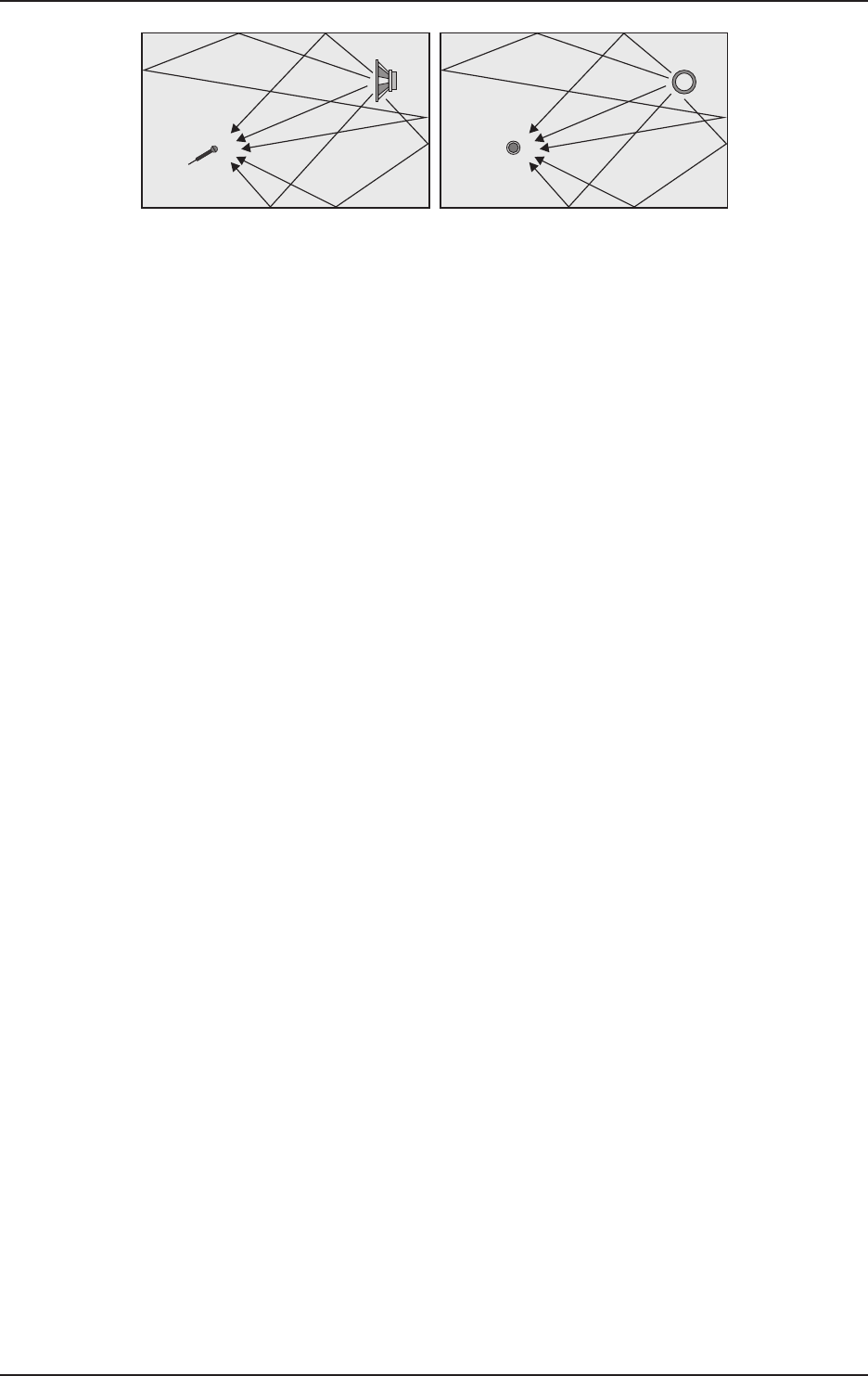
23
VIRTUALIZER PRO DSP1024P
Sender
Receiver
Speaker
Microphone
Room Plate
Fig. 4.2: Room reflections and reverb plate reflections
Spring reverb devices use a similar principle, but their reverb sound is of inferior quality compared to a properly
adjusted reverb plate. In particular, dynamic signals such as drums have a highly compressed and flat sound
when they are reproduced with a spring reverb. Still, spring reverbs can be found even today in guitar amplifiers.
Due to the speakers used in such amps, there are no extremely high frequencies to be processed, so lower
reverb quality (in particular, in view of the cost) can be an acceptable alternative for guitarists. Yet, spring reverb
designs suffer from a few drawbacks limiting their professional use:
s
The parameters of spring reverb devices cannot be modified or edited. To allow for different reverb decay
times, you would need to alter the physical properties of the springs.
s
The clattering sound of spring reverbs is a much-dreaded effect, in particular, on stage. Shock can set the
reverb spring in motion so that it hits against its enclosure. The resulting noise resembles that of thunder.
s
Spring reverb is of poor quality, especially with percussive signals, which is the reason why the use of such
devices in recording studios is highly limited.
4.1.3 Digital reverb
With the development of digital reverb devices, spring reverbs and reverb plates have almost completely van-
ished from the studio, because digital devices feature a wealth of advantages:
s
Excellent reverb quality.
s
Mass production allows for reducing the prices of digital reverb devices.
s
Many parameters can be modified and stored.
s
With their compact design digital devices are easily portable.
s
Digital devices need almost no maintenance and are virtually insusceptible to interference.
Basically, digital reverberation tries to provide a virtual simulation of real (in specific situations even surreal)
reverb phenomena by means of algorithms computed by an effects processor. The quality of this simulation
largely depends on the software (algorithms), the performance features of the processor used and the quality
of the AD/DA converters. Since natural reverb comprises thousands of single echoes, a fast processor must be
used to perform the complex calculations needed. To make the reverb programs sound natural, appropriate
software must be used to be able to control the most essential parameters of a reverb phenomenon. For
example, signal diffraction, reflections from different kinds of material, phase shift and room resonances must
be calculated. Consequently, digital devices allow editing of many more parameters than reverb plates or
spring reverbs do. In almost all digital devices, (at least) the following parameters can be modified:
s
Pre-delay time: this parameter determines the time between the occurrence of original signal and first
reflections.
s
Decay time: determines the duration of the reverb (in seconds).
s
High-damp: a function that allows for equalizing the reverberated sound in the higher frequency range. To
simulate the sound of a heavily damped room, for instance, the high-frequency portions in the reverb signal
must be reduced.
4. TECHNICAL BACKGROUND


















